/https://storage.googleapis.com/s3-autonomous-upgrade-3/static/upload/images/new_post/11-types-of-desks-features-4157-1646907010544.jpg)
Your office desk is the centerpiece of your workspace, which means it's probably the first thing you purchase, after which you build everything else around it. However, did you know that there are numerous types of desks out there?
Some of these desk types are incredibly obtuse, and you are probably never going to encounter one of them, so they're not going to be the focus of this article.
So, while what is covered is certainly not exhaustive, you are going to be getting a broad look at some of the different desk types that may be useful for you to know.
The idea is to give you useful details that allow you to identify them if you should ever see them. In some cases, there are even examples to bring the concept to life.
11 Types of Desks and Their Features
1. Standing Desk
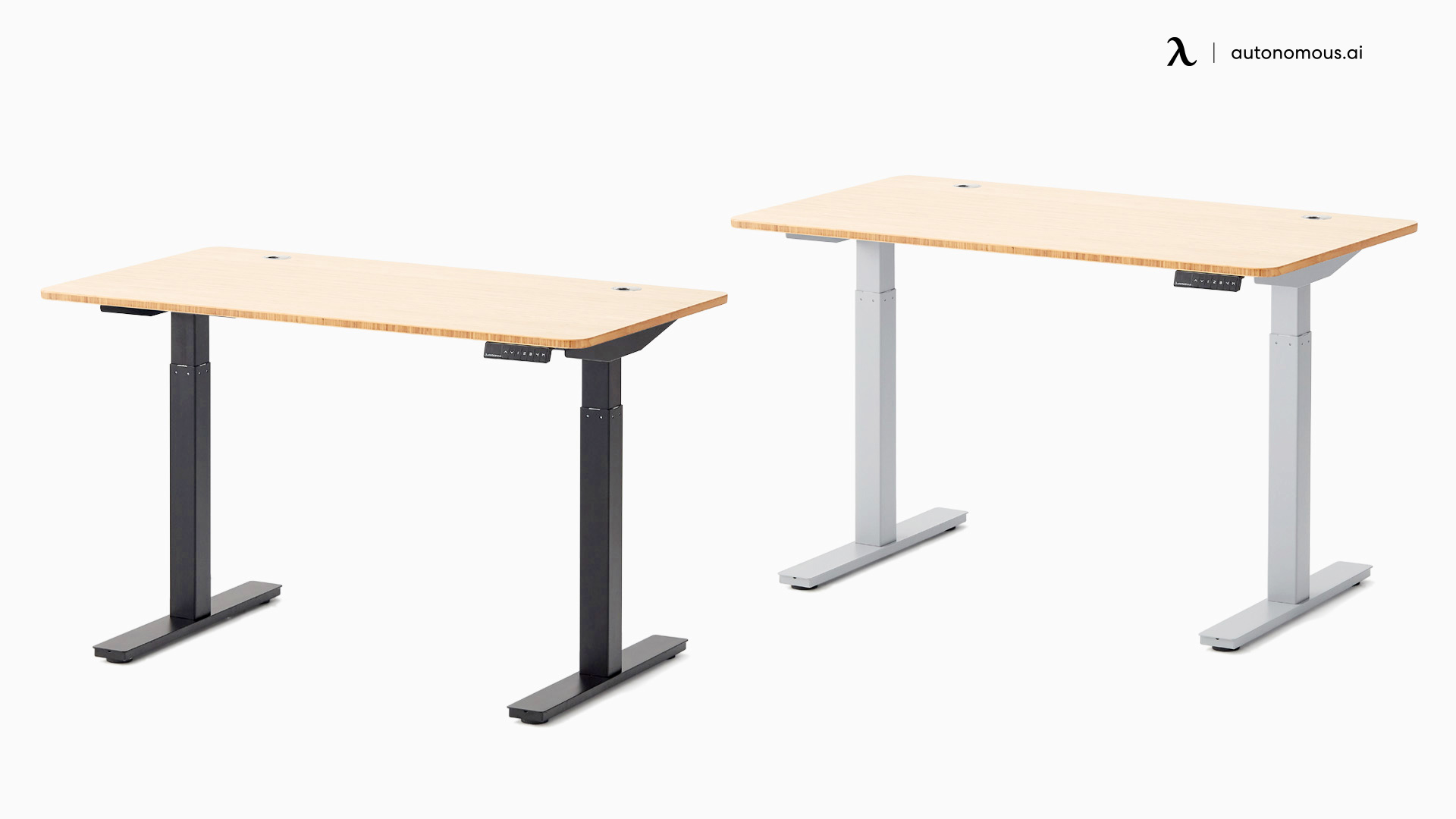
It's almost as if office standing desk designs are the new “in thing” these days. This could be a traditional office standing desk or a home office standing desk.
It challenges the typical concept of being seated all day, which is a recipe for many of the issues that come with a sedentary lifestyle.
The human body is not made to be seated for so long, after all. However, there is another side to the equation that is often ignored. Human bodies were not made for standing all day either, as that comes with its own issues.
Technically speaking, the best thing for the body is to keep moving. Of course, being on the move the entire time you are awake is not practical, so the next best thing is sit-stand sessions.
With these, you alternate between seated and standing positions at intervals to give the body the necessary movement it needs. That's one of the reasons you want to ensure that you are getting an adjustable standing desk, such as the Autonomous SmartDesk Core.
2. Corner Desk
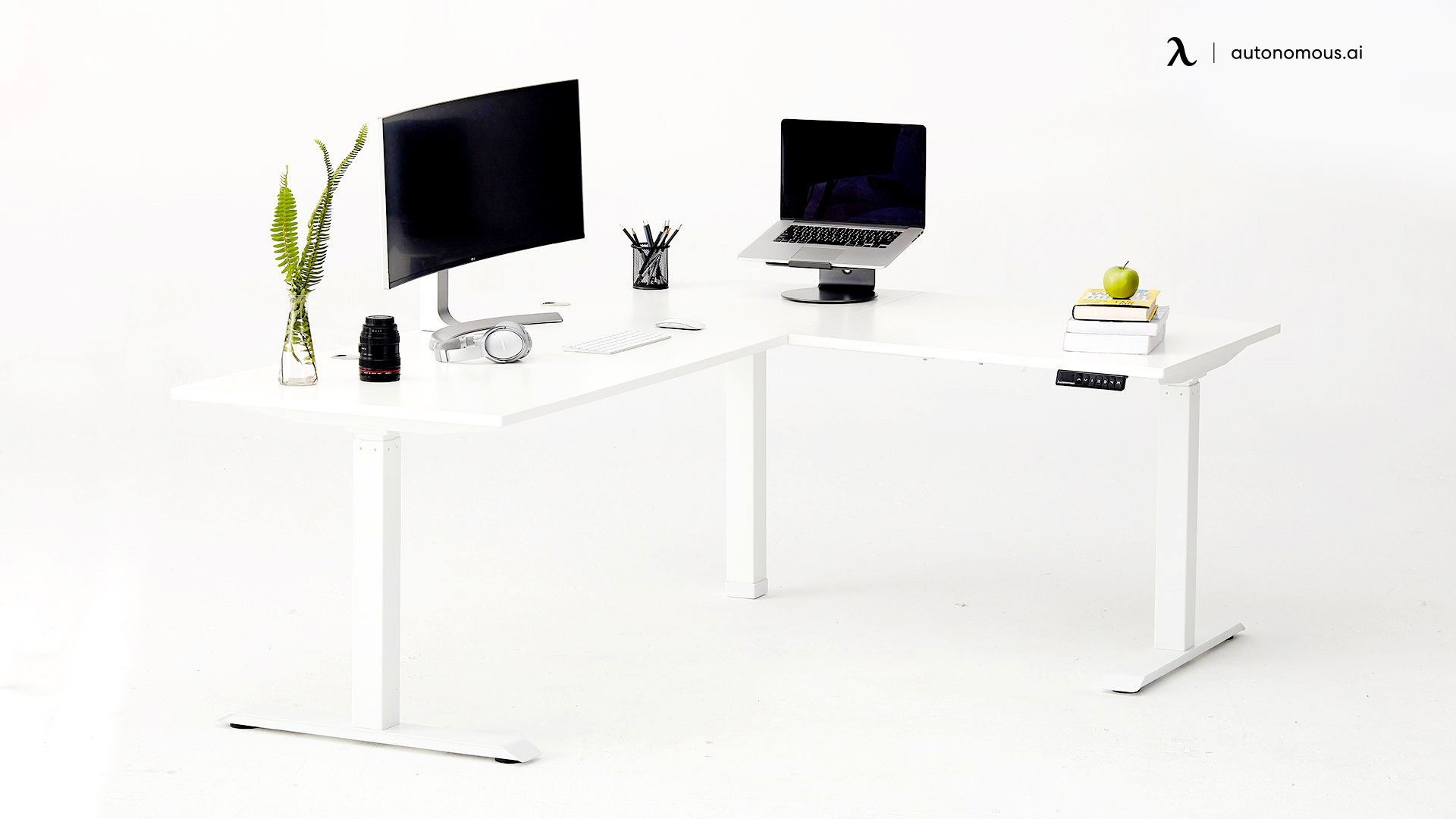
As the name would imply, a corner desk is one that you would typically use in the corner of a room. The shape and stylistic design of these types of desks tend to yield greater tabletop real estate than standard alternatives if placed in the same position.
One of the problems with traditional desk corner placement is that whatever side touches the corner tends to create a bit of reachability and comfort issues. So, corner desks are designed to bridge that gap.
What you may realize as you continue through this list is that there may be some overlap in the types of desks you see. For example, it's entirely possible to have a corner standing desk, which meets the need of taking advantage of corner space while attending to the health need of not remaining seated all the time.
Note that corner desks can come in different shapes and styles. For example, triangular or trapezoid shapes may be used to perfectly align to the contours of the wall while angling the user diagonally.
Alternatively, you may notice the more popular L-shaped desk styles that “wraps around” the corner.
3. Writing Desk
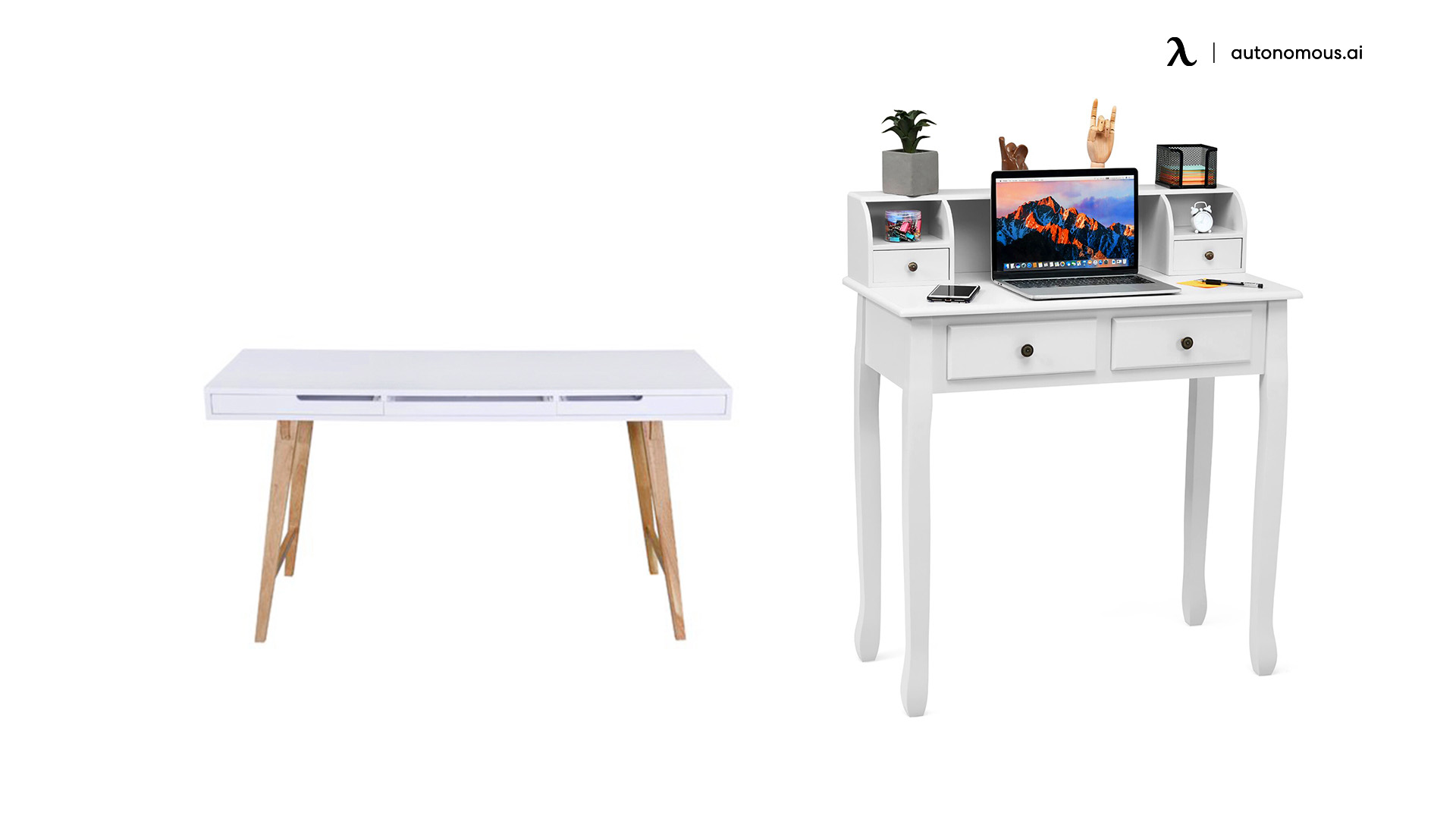
Most people may tell you that there are numerous types of writing desk designs. That's because you could technically argue that any desk under the sun is a writing desk. After all, you could choose to sit and write on it, right?
Be that as it may, what you may not realize is that there is a dedicated design that is specifically known as a writing desk. It aims to provide greater stability and comfort to people who need to get some writing, drawing, or the like done.
You find that the legs on these are thin, as they are not meant to support a slew of equipment as some of the other desk styles are. Instead, you are not going to be doing much more than pressing on them for a bit.
These desks have been around for quite some time, which is why you may notice some older and some more modern designs.
4. Executive Desk
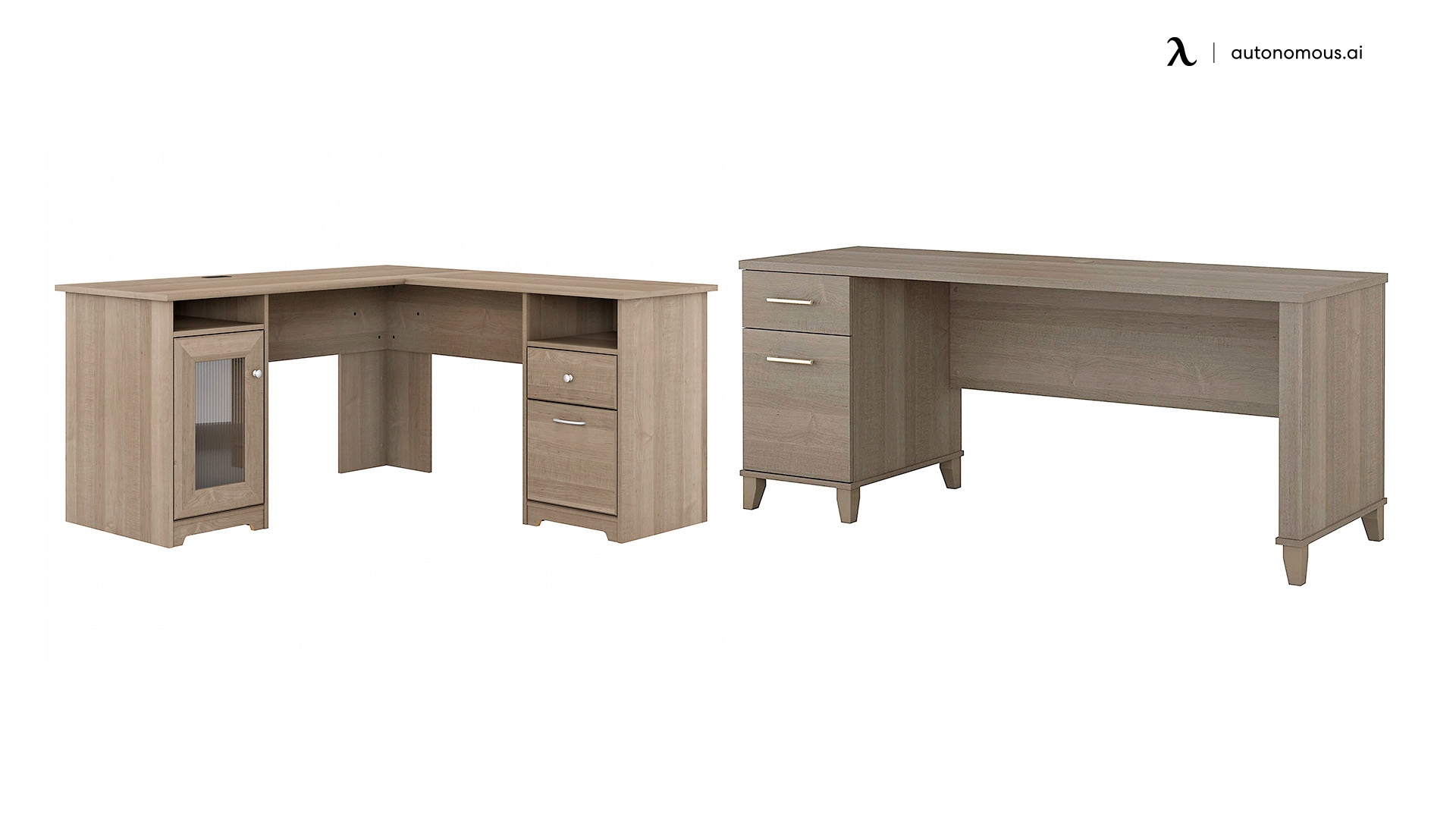
This is another type of desks where you may see a bit of overlap. Executive desks tend to be most often found in grandiose home offices. Their purpose is to provide a series of storage options, as well as a huge writing surface to take advantage of.
If you don't have a lot of space, don't even look at an executive office desk, as the footprint is larger than you may realize. They come in L-shape, U-shape, and open plan designs.
The open plan design is not one that you find in the home as you do the other two. Instead, these are more often used in the corporate world, which you can see in a lot of offices.
This type of desks feature rows of desks that have no divider to separate them. Sometimes, it’s one big, connected unit that appears as numerous smaller ones. Company owners tend to opt for these as they are said to foster greater collaboration and rapport among staff members.
5. Floating Desk

When you hear the term “floating desk”, your imagination probably starts to run wild if you have never seen one. These tend to be found in areas where spatial concerns may be present, but a desk is still needed to facilitate some work or recreation.
The designs forego legs and use a mounted style instead. The appeal, of course, comes from the ability to place them in areas that may otherwise not be able to accommodate any kind of table.
To take it a step further, some people use foldable floating desks, which means that the table only requires space while it is being used.
6. Desk Converter
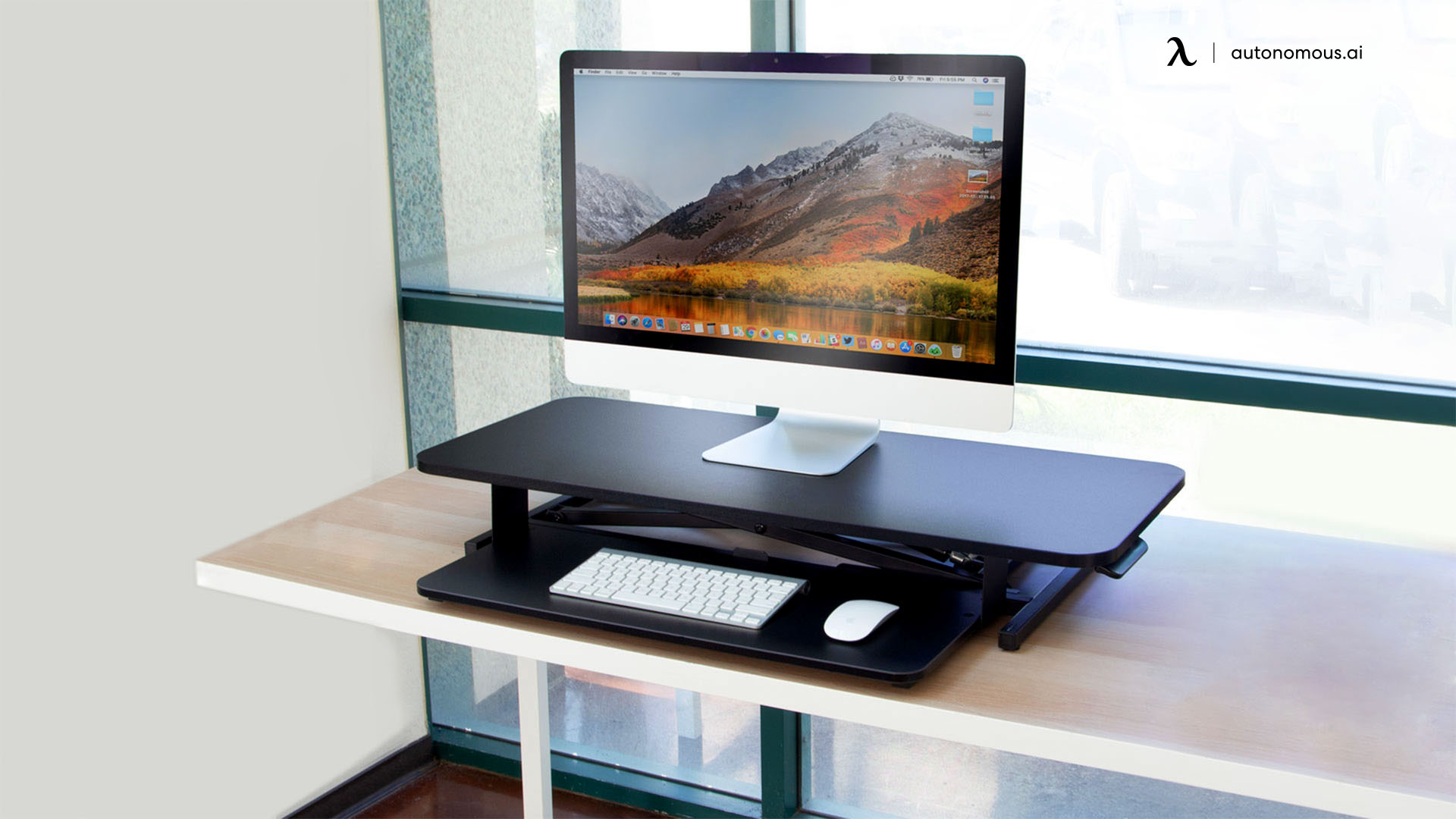
These converters have become wildly popular because people are not willing to throw away their perfectly good traditional units to buy standing ones. The Mount-It! desk converter is a perfect representation of what this category looks like.
Still, it does necessitate some level of explanation to clear up what you should expect to see here. The name “converter” comes from the fact that these units transform your traditional desk into a standing desk.
Of course, this is not done by replacing their existing legs with an adjustable frame. Instead, you put the converter, which equates to another desk surface, flat on top of your existing office desk.
However, there is a lifting mechanism included. So, once you put your office equipment atop the converter, you can then adjust it up and down at will, giving you the feeling of an adjustable standing desk.
Of course, you tend to lose your original office tabletop desk space in favor of the converter, which is not usually a problem, so long as the latter has enough real estate to accommodate your items.
There is another alternative under this category known as a riser, which tends to attach to the back of your desk style, allowing you to slide peripheral platforms and your monitors up and down along a beam.
The difference and benefit here is that you don't necessarily lose your tabletop space completely by opting for one of these.
7. Butler’s Desk
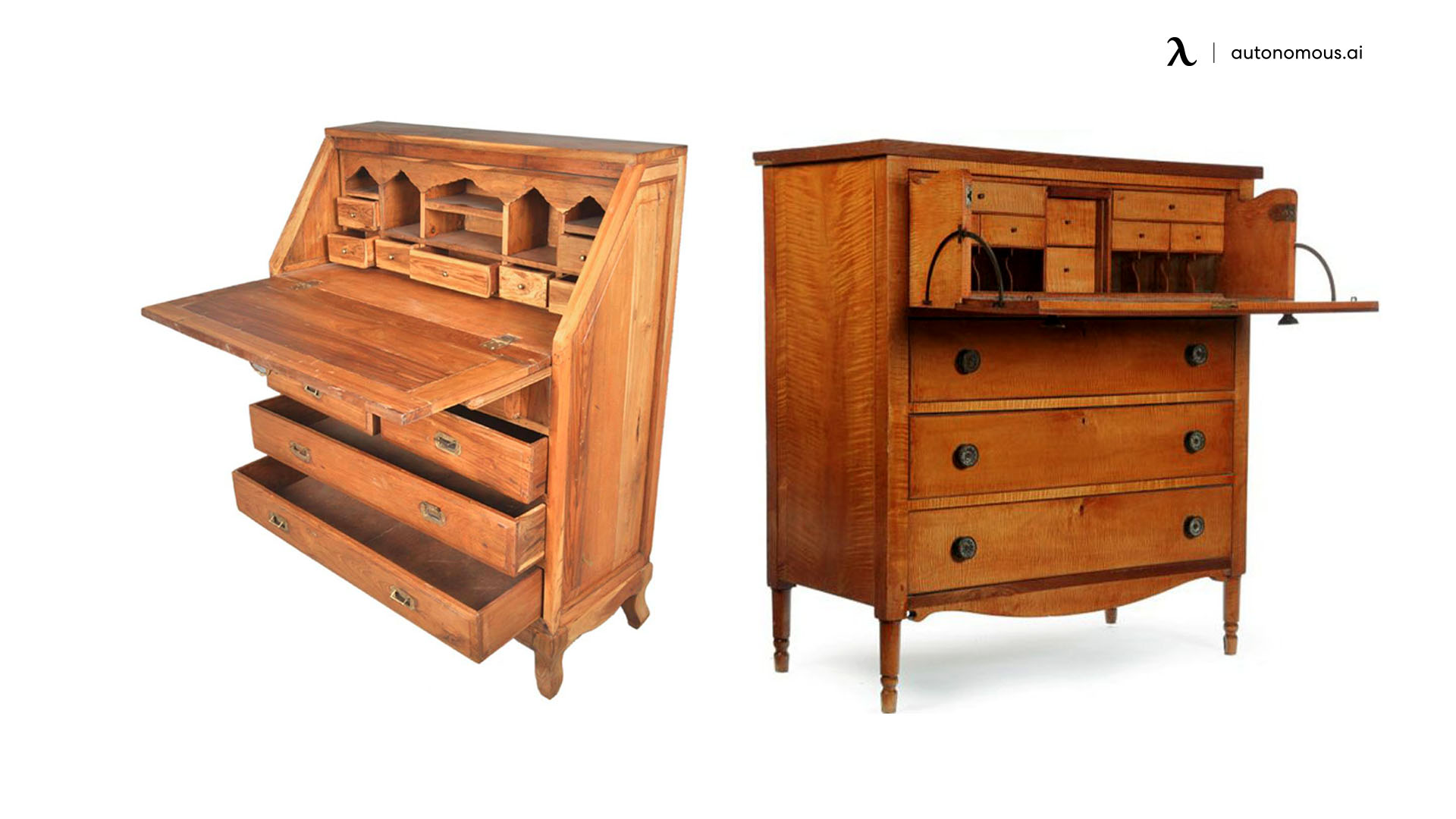
There is nowhere that you are going to find a modern butler’s desk, simply because it's not something that bears the modern relevance of some of its contemporaries. These days, it's more of a collector’s item or a piece of furniture that lets all your visitors know that you know how to implement a touch of class in your home.
The reason these desks are obsolete is because they're 18th-century designs that were intended for head household servants. Its purpose was to carry various documents. You can see this in the storage design style that features a host of letter start slots and small drawers.
In fact, it wasn't out of the ordinary for secret compartments to be lying around for the most confidential items.
8. Coffee Table Desk

You probably have a coffee table in your own setup, and if you do, you know that this one is not for heavy equipment or writing. Instead, these desks tend to be placed in front of a sofa for convenience items that may be associated with leisure time.
For example, it's a common place for remote placement, though people still manage to lose track of the remote somehow. Additionally, if you have guests over, it's a great place for serving refreshments or snacks.
Beyond its functional capabilities, people often seek out coffee tables for the aesthetic flair that they can bring to a room. Designs range from glass to beautiful styles of wood that act as a room's centerpiece.
You may even notice that some coffee tables come shipped complete with stools that can easily fit under the table.
9. Lectern Desk

This is another type of desk for you. The use case of a lectern desk is fairly limited. It's not one of the types of desks that you may see laying around in a home or traditional office. However, if you take a trip to your local university or college, you may notice a host of them present.
That's because its special use case revolves around presentations. So, while you can certainly find it in other contexts that may require someone to give a speech, lecture halls are where they are seemingly most prevalent.
It boasts a composition that is conducive to holding notes and other items that the presenter may need while obscuring them from the view of the audience. That way, it creates the illusion of a more well-prepared and fluent presenter, provided that the person is well acquainted with using the tool effectively.
Apart from the top-level storage area, there are also usually little drawers or shelves that store office accessories are other items that presenters may need to be easily reachable.
10. Telephone Desk
Like the butler's desk styles, the telephone desk would be way past its time in 2022. This is especially true when you consider the kind of telephones that were around when these were more popular. Its entire purpose was to allow people to effectively take notes from conversations as they listened on the phone.
As you know, sometimes it gets a little annoying to try to write something down as you talk, so it was usually convenient to have everything a fingertip away. Of course, they would often include little storage drawers, so users would not necessarily have to scramble around trying to find pen and paper to write the said notes.
However, time has seen traditional telephones lose their viability. Office spaces are some of the only ones that commonly feature landlines that are fully cabled. Instead, you find that cordless designs are becoming more popular as the days go on.
Additionally, people now have cell phones that are way more convenient to carry around. This is in tandem with many more ways of taking notes that don’t require a pen or paper.
11. Ergonomic Desk
The last type of desks on the agenda is the ergonomic desk, and it's another one of the crossover types since you often have standing desks with ergonomic designs. As the name implies, these are usually built to ensure that people can remain comfortable and in a neutral position as they work.
Features that may contribute to this include a curved peripheral tray with angling capabilities, height adjustment, wrist rest areas, and possibly even a monitor riser.
They go well with ergonomic seating, lighting, and peripherals, to give you the full package that makes for a very productive and beneficial work experience.
Final Remarks
How many of the different kinds of desks that you saw were you familiar with before you started reading? You may even have realized that some of the types of office desk designs that you've seen in various buildings may not necessarily have been created for the office at all.
It's an interesting prospect to think about, and it also allows you to ensure that you choose the most optimal one for your own needs. Certainly, some desk styles, such as the standing desks and the corner desks are way more suited for work needs.
However, it does not necessarily mean that some of the others are not highly effective at their intended purposes too. Still, you may want to keep some of them out of the office if you aim to be as productive as possible.
Subscribe for a 10% discount on your first order.
Sign up for our weekly update and be the first to know about our specials & promotions.
Verbreiten Sie es weiter

/https://storage.googleapis.com/s3-autonomous-upgrade-3/production/ecm/240409/smartdesk-one-apr-2024-offer-1920x540-CTA.jpg)
/https://storage.googleapis.com/s3-autonomous-upgrade-3/production/ecm/240409/smartdesk-one-apr-2024-offer-720x1200-CTA.jpg)
/https://storage.googleapis.com/s3-autonomous-upgrade-3/production/ecm/240415/bulk-order-apr-2024-offer-720x1200-CTA-min.jpg)
/https://storage.googleapis.com/s3-autonomous-upgrade-3/production/ecm/240415/pod-offer-apr-2024-720x1200-CTA.jpg)
/https://storage.googleapis.com/s3-autonomous-upgrade-3/static/upload/images/new_post_author/admin-1.png)